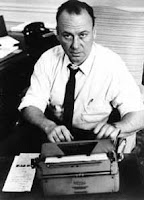
The 4th of July is a date Americans view as a celebration of independence; however, I wonder just what the average ‘American’ has in her/his mind as s/he celebrates the day. Is it just another day off? A brief holiday at the beginning of summer? A nice day for a picnic and a few fireworks? A day for a few patriotic speeches? A celebration of American, the birth of a nation? It is designated a Federal Holiday and is intended to be a day commemorating the adoption of the Declaration of Independence on the 4th July 1776, declaring separation from the Kingdom of Great Britain.
“When in the course of human events, it becomes necessary for one people to dissolve the political bands which have connected them with another, and to assume the powers of the earth, the separate and equal station to which the Laws of Nature and of Nature's God entitle them, a decent respect to the opinions of mankind requires that they should declare the causes which impel them to the separation.”
What I like most about this ‘declaration’ is its simplicity and directness of thought. The first thought is that groups of people are held together by political bands and that, perhaps inevitably, events may occur requiring part of that group to break away and form its own sovereign and independent group. The second thought is that the ‘Laws of Nature’ and ‘Nature’s God’ entitle the group to break away. The group can only follow its natural instinct; however, in doing so it must also follow the third thought, that out of decency and respect for the whole group, it is required to state the reasons why it must form its own breakaway group.
Necessity, nature, decency and respect are the very foundations of freedom and that is why:
We hold these truths to be self-evident, that all men are created equal, that they are endowed by their Creator with certain unalienable Rights, that among these are Life, Liberty and the pursuit of Happiness.
This is reinforcing the opening paragraph, defining the very Laws of Nature, which compel the group to act. It is this very ‘duty to rebel when the government violates the rights of the people’ as reiterated in the First French Republic’s Acte Constitutionnel du 24 Juin 1793 (see blog entry 24th June 2011)
What I am getting at, is that the 4th of July should be a natural celebration of decency and respect, because that is what compelled those men, who came together at the Continental Congress in 1776, to come together despite their varying and disparate views and situations, and to agree to sign, as a group, the Declaration of Independence.
By coincidence, fifty years later, on the 4th July 1826, two of the men who singed up to and wrote the declaration, John Adams(2nd President) and Thomas Jefferson (3rd President) died the same day.
 |
| Jefferson |
 |
| Adams |
It was also on the 4th July 1827 that Slavery was abolished in New York State.
 |
| Lewis Adams |
On the 4th July 1881 the Tuskegee Institute opened in Alabama. The school was founded, on that day, as the Tuskegee Normal School for Colored Teachers. The school was the dream of Lewis Adams, formerly enslaved, and George W. Campbell, a former slaveholder. Adams could read, write and speak several languages despite having no formal education. He was an experienced tinsmith, harness-maker and shoemaker and Prince Hall Freemason, an acknowledged leader of the African-American community in Macon, County, Alabama.
It was on the 4th July 1886 that the people of France offered the Statue of Liberty to the people of the United States.
And finally, in keeping with the idea of independence, The Indian Independence Bill was presented on the 4th July 1947 by the then prime minister, Clement Attlee, before the British House of Commons:
 |
| Attlee |
"to make provision for the setting up in India of two independent Dominions, to substitute other provisions for certain provisions of the Government of India Act, 1935, which apply outside those Dominions, and to provide for other matters consequential on or connected with the setting up of those Dominions," presented by the Prime Minister; supported by Sir Stafford Cripps, Mr. Alexander and Mr. Arthur Henderson; to be read a Second time upon Monday next, and to be printed. [Bill 92.]
Independence did not actually happen till 15th August 1947.














































